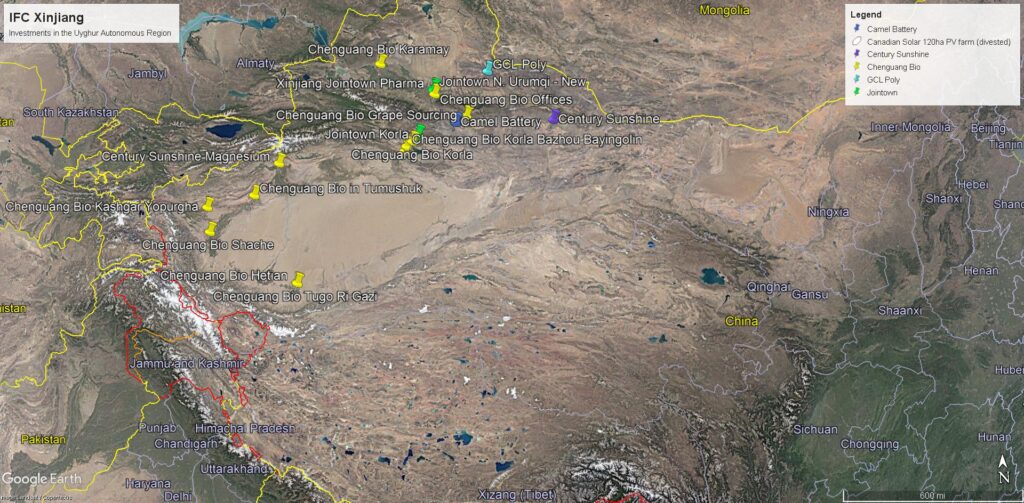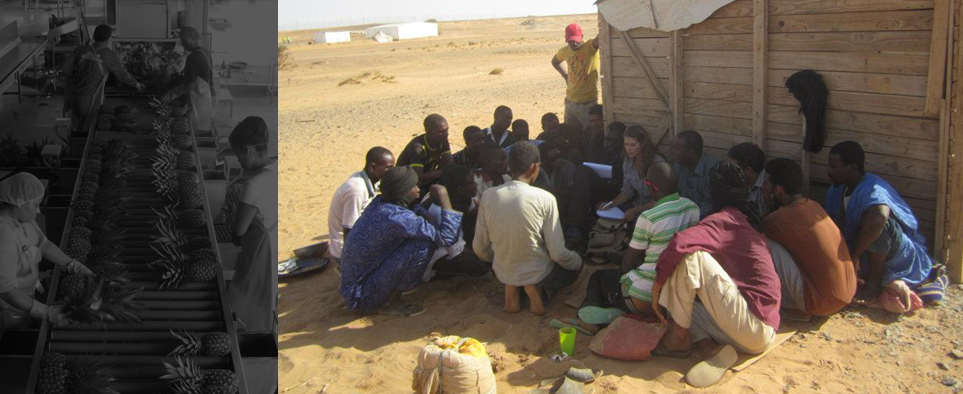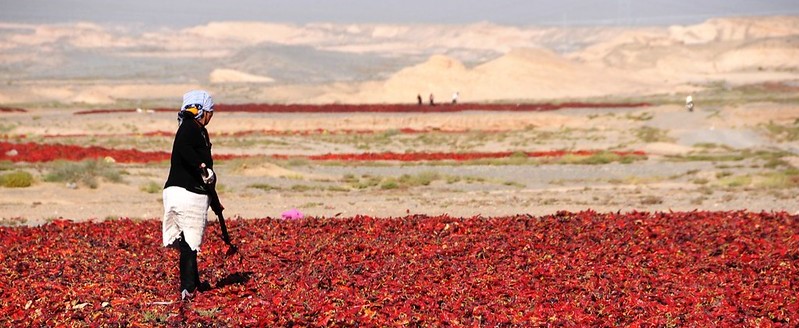This is the second in a series examining IFC’s implementation of its Indigenous Peoples Performance Standard, PS7. See the first report here. See the third report on the hundreds of projects that bypassed PS7 completely here.
Since 2017 the government of China’s Xinjiang Uyghur Autonomous Region has been imprisoning Uyghurs en masse, subjecting them to reeducation and forced labor, separating them from their children and forcibly sterilizing them.
Development actors and businesses are a key component of Uyghur subjugation. Agricultural commodities – specifically cotton and tomatoes – are harvested by detainees or villagers targeted by authorities for “poverty reduction campaigns” that traffic them to remote villages. Manufacturing firms use detainees as a captive labor force, either for their operations or for short-term contracts. Tech companies have taken grants from Beijing to create a surveillance state in Xinjiang that has made the whole region a prison. The government has worked to dilute the Uyghur population by incentivizing businesses to set up shop in Xinjiang and import labor forces along with them.
Policy experts and, recently, the US government, has referred to this systematic campaign of repression as Cultural Genocide. Industry associations, government agencies and auditors have placed blanket bans on working in or sourcing goods from Xinjiang as a result.
The World Bank’s private lending arm, the International Finance Corporation (IFC) has taken no comparable stance. Although the IFC has environmental and social Performance Standards to govern the practices of its clients, implementation of these standards is not on display in Xinjiang. Of 10 investments IFC made in the region since the 2012 standards were launched, only one considered whether the region’s indigenous Turkic Uyghur population merited protections – and concluded they did not.
IFC’s investments in the region are in agriculture, manufacturing and IT. NomoGaia sought clarity on IFC’s due diligence processes in these investments starting in November 2020. Since then, IFC has divested from three of the 10 projects but has failed to demonstrate that its remaining clients are removed from the campaign of ethnic erasure underway.
The map below geolocates IFC’s investment, spread across the region.

IFC was not aware of the footprints of many of these investments, making it impossible for it to have been monitoring land use changes or destruction of cultural heritage, as the bank has been unable to visit the region since mid-2019. Absent compelling data demonstrating that IFC is monitoring the complex business relationships that subjugate Uyghur people and culture in Xinjiang, IFC should terminate its remaining outstanding loans and commit to a development approach that recognizes no level of ‘poverty reduction’ can justify cultural erasure.
*Please note this report has been modified from its original version regarding Xinjiang Goldwind. A line of credit had been misstated to be higher than the actual value of the line of credit and has been corrected. A media source was modified to denote the original publication rather than the syndicated publication. The evolution of the relationship between Goldwind and the XPCC has been clarified. (September 20, 2022)



Stop this genocide now!